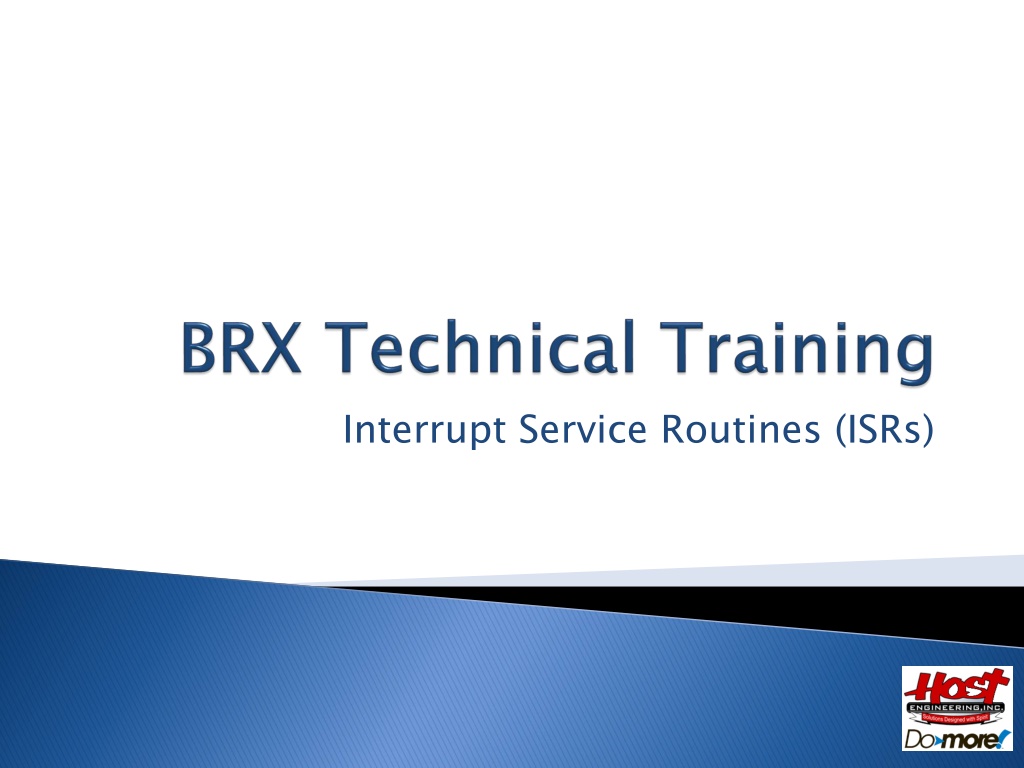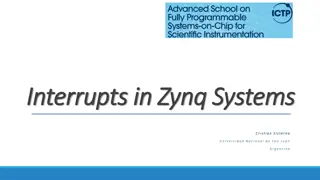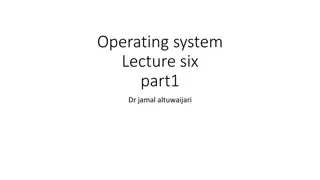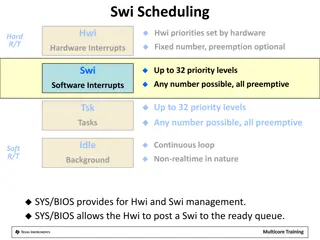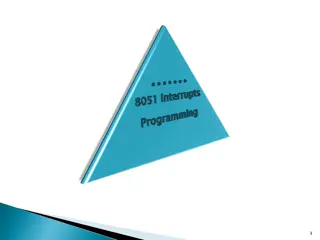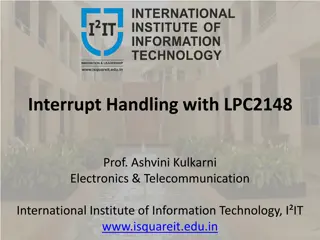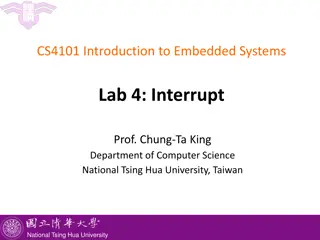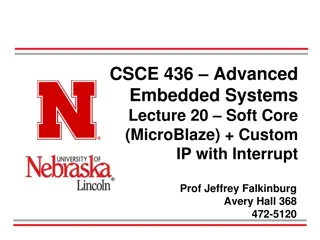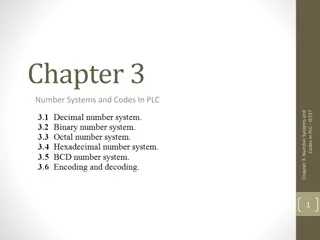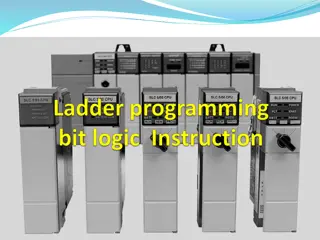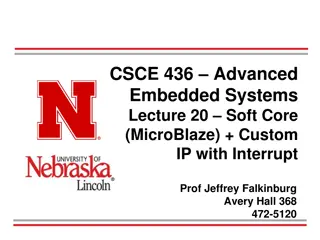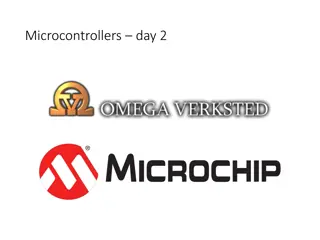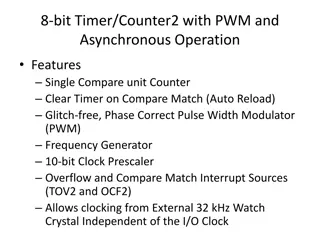Understanding Interrupt Service Routines (ISRs) in PLC Programming
Interrupt Service Routines (ISRs) are crucial in handling interrupting events in programmable logic controller (PLC) systems that require immediate attention. They can be triggered by events, timers, and register matches, executing outside the normal ladder scan. ISRs have priority order for handling multiple triggers, ensuring efficient event processing and control in PLC applications.
Download Presentation

Please find below an Image/Link to download the presentation.
The content on the website is provided AS IS for your information and personal use only. It may not be sold, licensed, or shared on other websites without obtaining consent from the author. Download presentation by click this link. If you encounter any issues during the download, it is possible that the publisher has removed the file from their server.
E N D
Presentation Transcript
Choose an ISR if your application requires An interrupting event that needs to be handled immediately (cannot wait on the normal scan of the PLC) Triggered to run with a configured: Event input(s) Timer Register Match register(s) value(s) Cannot be invoked in ladders (no instruction exists) Trigger interrupts normal ladder scan and executes the ISR then returns to normal ladder scan where it left off The same trigger cannot retrigger itself while running its own ISR If triggers occur while an ISR is running: Those triggers will run after the current ISR according to priority (not according to chronology): Event1, Timer1, Match1, Event2, Timer2, Match2, Event3, Timer3, Match3, Event4, Timer4, Match4 No edge-triggered, asynchronous, multi-scan instructions, Stages or calls to Subroutines Event based on the state of on-board Read INs Read INs Timer based on a hardware timer Register Match based on on-board I/O MyISR MyISR Ladder Logic Ladder Logic Write OUTs Write OUTs
Priority 1 Low High Trigger Register 0 0 0 0 0 0 0 0 0 0 0 0 Match4 1 1 Having completed running Match4 s ISR, the bit is cleared Match1 Match3 Match2 Timer2 Timer1 Timer4 Timer3 Event2 Event1 Event3 Event4 Next in line to run is Event4 Having completed running Event4 s ISR, the bit is cleared Having completed running Timer3 s ISR, the bit is cleared Match4 triggers Event4 triggers Next in line to run is Timer3 Even though Timer3 occurred after Event4, it is now the highest priority to run Timer3 s ISR Timer3 s ISR Ladder Logic Match4 s ISR Match4 s ISR Timer3 triggers Event Event4 4 s ISR s ISR
Memory Structure Members All readable/writable . .HasRun least one time since last Program-to-Run transition .Inhibit Set ON to prevent ISR from being executed when interrupt trigger occurs Reset OFF to reenable ISR to run . .RunCounter number of times ISR has run since last Program-to-Run transition .Latency trigger happened to when the ISR is executed . .ExecutionTime ISR to run HasRun (bit) ON if ISR has run at .Inhibit (bit) RunCounter (unsigned word) .Latency (unsigned word) time in sec from when the ExecutionTime (unsigned word) time in sec it takes the
Real Inputs Code blocks only read/write Image Register Instructions especially designed for ISRs: These change the state of the specified bit immediately instead of waiting to change the bit as part of the normal I/O scan between scans OUTI RSTI SETI Immediate instructions take more time because they write to the image register & directly to I/O For example: OUTI Y0 OUT Y0 Termination scan: If used in ISR or Subroutine, no termination logic If used in Program, Task or Stage, normal termination logic executed Normal PLC Scan Normal PLC Scan w/Immediate Instruction Read Inputs Read Inputs OUTI Output Immediate Coil RSTI Reset Immediate Bit SETI Set Immediate Bit Code Blocks OUTI Encountered Y0 in Image Register is updated Image Register (INs) Y0 in the real world output is written Code Blocks Image Register (OUTs) OUTI Y0 takes 6 6- -7 s OUT Y0 takes 1 1- -2 s Write Outputs 7 s 2 s Real Outputs Write Outputs
